Steve Kerr's Absence: The True Test Of A Leader

Instead of a suit, Steve Kerr wore a baggy gray sweatshirt, the kind your dad might throw on to clean the garage. Rather than stand, he sat off to the side of the room, an observer in his own realm. Still, he was back at a Warriors game on Sunday for the first time in weeks, watching the opener of the Western Conference finals from the Golden State locker room and briefly addressing the players at halftime, a man unable to stalk the sideline but willing to settle for proximity. It’s now been almost a month since Kerr left to deal with ongoing complications from 2015 back surgery and, while team officials are optimistic he will coach again at some point, he remains out indefinitely.
One element of his absence is worth dwelling on, though. Here is a man who owns one of the highest winning percentages in league history, who has been named NBA Coach of the Year, and who has become so popular that there is a movement—increasingly less facetious—for him to run for office. In theory, the Warriors should be lost without him. And yet, they literally have not lost without him. Without Kerr, Golden State finished off Portland, swept Utah, and, most recently, pulled out Sunday’s 113-111 comeback win over the Spurs.
Which means that over the span of two seasons, and a pair of interim coaches—first Luke Walton and now Mike Brown—Golden State is now 46-4 without Kerr.
How are we supposed to make sense of this? How can a coach be both essential and unnecessary?
Let us investigate the possible theories and clues, starting with …
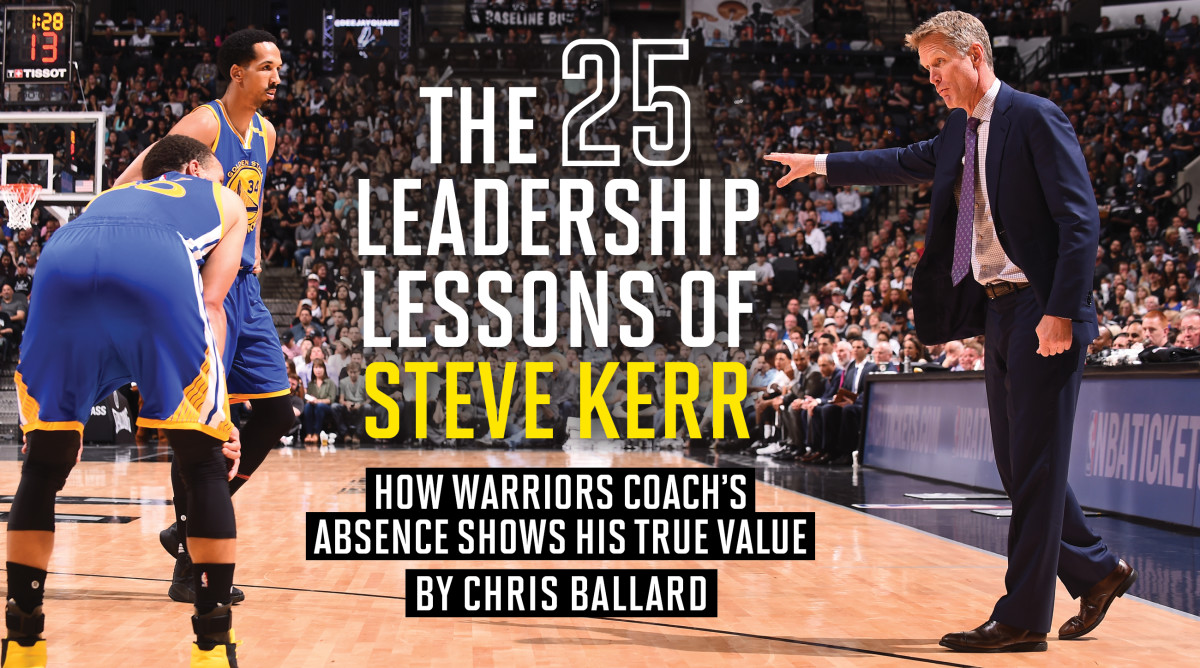
1. The Obvious Reason(s)
Also known as Steph Curry, Kevin Durant, Draymond Green, Andre Iguodala, and Klay Thompson. “Everyone who gets into coaching in the NBA knows it’s all about the talent,” Kerr told me recently. And, indeed, the Warriors are deep, cohesive, and possess an almost-telepathic chemistry, especially on defense, where five players often move as one, performing an intricate dance of switches and rotations on each play. There is some truth to the idea that you could take someone from the local YMCA noon run, install him or her as Warriors coach, and the team still might win the title (so long as our noon baller knew well enough to stay the hell out of the way). As such, Golden State represents the closest thing the NBA has to a self-driving car.
Then again, at the risk of taking the automotive analogy too far, someone has to design and maintain the car. Which leads us to the idea that…
2. Kerr Possesses Some Super Secret Coaching Sauce
Ten years ago, he coached a team almost as mighty as Golden State. It rarely lost, despite holding practices at the local LA Fitness, starting no one over 6’3", and suiting up only six players, seven if they could grab someone at the last minute.
These were the San Diego Wildcats, starring Nick Kerr and his seventh grade buddies. Steve sprung the boys from last period every afternoon for “independent PE” (AKA practice). In addition to two-on-two drills, Kerr delighted in installing a few old favorites, including “Blind Pig” from the Bulls’ triangle offense (the big man comes to the high post, with the option for a “blind” backdoor pass to a cutter).
Kerr’s demeanor with the Wildcats, he told me, was “basically the same as now,” which seems unlikely considering the difference between 12-year-olds and NBA players. But Nick, who is now 24 and has shadowed the Warriors the last two postseasons, provides the same assessment. “Honestly, he was exactly like today,” Nick says. “Pretty relaxed, didn’t really yell.” Nick thinks for a moment. “Well, one time we came out really flat and weren’t trying very hard and he slammed his clipboard and it broke so, yeah, that wasn’t the first clipboard he broke in the Finals last year.”
The seventh graders remain Kerr’s only coaching experience prior to the Warriors. Which suggests that perhaps he’s just a natural. Indeed, Mike Brown describes Steve possessing “this aura of success” in which “everything he touches turns to gold,” as if Kerr were the pied piper of the W's. It makes sense. Five rings as a player and one as a coach. Retired as the NBA leader in three-point percentage. Killed it as a TNT analyst.
Normally, a man this successful would be easy—maybe even fun—to dislike. Getting to play with MJand coach Steph? And yet…
3. Pretty Much Everyone Loves Steve
Coaches like him. Players like him. The media would clone him if possible, so that he might run every press conference for every team in every sport, reliably dispensing anecdotes and one-liners and big-picture context. When I ask his peers if they’ve ever met someone who doesn’t like Kerr, they profess to be stumped, though Ron Adams, the Warriors’ philosophically-inclined assistant, says, “But wouldn’t it be interesting to find someone who did?” Tom Tolbert, the former Warriors forward and Kerr’s teammate at Arizona, is less ruminative. He just cracks up. “C’mon, is it possible not to like Steve?”
But perhaps interim head coach Mike Brown sums it up best. “Given all the success Steve’s had, he could be an asshole and get away with it,” says Brown. “But he’s not.”
So, after filing that away as Steve Kerr’s First Boldface Leadership Secret—Don’t Be An Asshole—let us examine the potential reasons …
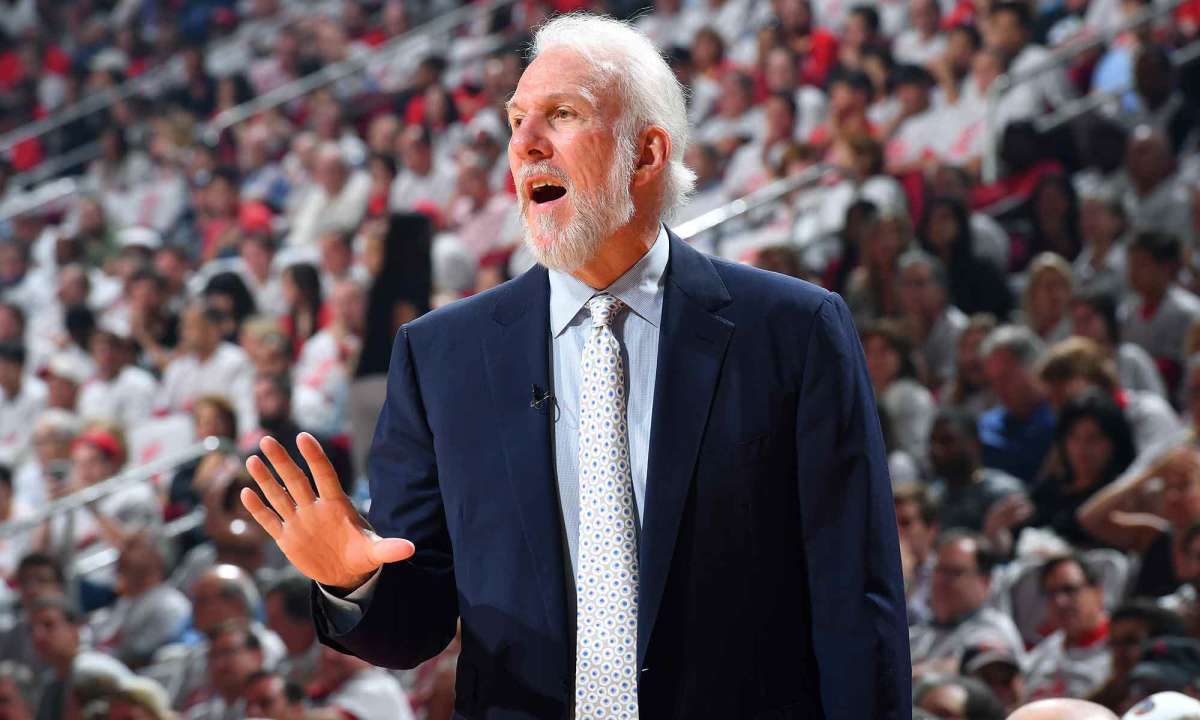
4. A Tip From Pop
When Kerr and I first discussed this story five weeks ago, before his health worsened, he had one condition: Only one photo. He understood we’d need to use one—“me standing there, pointing during a game or whatever”—but could we please leave it at that? (Editor's note: We did.) It’s something he learned from Popovich, during his time in San Antonio. The moment the players see you making it about you, not the team—when the coach gets the endorsements and poses for magazine covers and hosts a radio show—you lose them. Of course, Kerr and Pop go about this in very different ways. Pop keeps the media at bay by acting like a pissed-off professor, forever so, so disappointed in his students, while Kerr performs something closer to a comedy routine, reliably casting himself as the foil.
Their message is the same, though: It’s not about me. Which leads us to…
5. The Guy On The Street
The second time Kerr and I talked was four weeks ago, a Monday afternoon. It happened to be roughly the day his symptoms began worsening. Headaches. Neck pain. He reflexively rubbed his forehead and opened and closed his jaw, like someone trying to de-pressurize on an airplane descent. The same stuff he’s dealt with since the two back surgeries—a nicked spinal cord, a leak, confounding symptoms—were now exacerbated and subtly different. Yet, being Kerr, he still ran practice that morning and wasn’t about to bail on our lunch interview.
We walked west through downtown Oakland, toward his favorite Vietnamese place. For years, Kerr looked as if he’d forever just returned from the beach– blonde hair, trim, crinkles at the eyes. Now there was something hard about him; he was all edges, angles, creases. Two little boys approached, hoping for an autograph. Kerr signed and posed for a photo. Then a disheveled man across the street hollered “STEEEEVE!” Kerr said what he always says, what he would say later to the hotel security guard and the street vendor: “Hey, man. What’s going on? How’s it going?”
The NBA's 'Slide Under' Epidemic Claims Kawhi
The man hurried over, holding a pock-marked canvas, and related a tale of woe. Temporary homelessness. A run-in with the police. Kerr listened, nodding and asking questions—“Did you paint that? It’s cool.” Then he said “Good luck to you,” and handed the man $20 for art supplies.
Later, while discussing leadership at lunch, Kerr said the people that he admires most are the ones like Steph Curry and Tim Duncan who possess “this amazing combination of total belief in themselves and their ability and talent yet have a genuine modesty and awareness of how lucky they are.” He paused. “Look at that guy who came up to us on the street. Think about the life that guy’s had, you know?”
For Kerr, seeing the big picture is paramount. “[Some people] are just so tunnel vision all the time and just go go go and, ‘I’m going to succeed and kick ass in life’ and they just trample over everyone. The people to me who are the most powerful leaders are the ones who have great talent in whatever their field is, great conviction in their ability to teach it and act it, but an awareness and a humility and compassion for others.”
Later, when I talk to Nick U’Ren, the Warriors special assistant who’s known Kerr for a decade, he brings up the Duncan-Curry thing. “You know how Steve always talks about Steph having that combination of humility and confidence and how that's a recipe for leadership?” U’Ren laughs. “Steve’s got the exact same thing.”
Which may be true but is also precisely the type of credit Steve doesn’t want. So let’s get back to the Warriors and how…
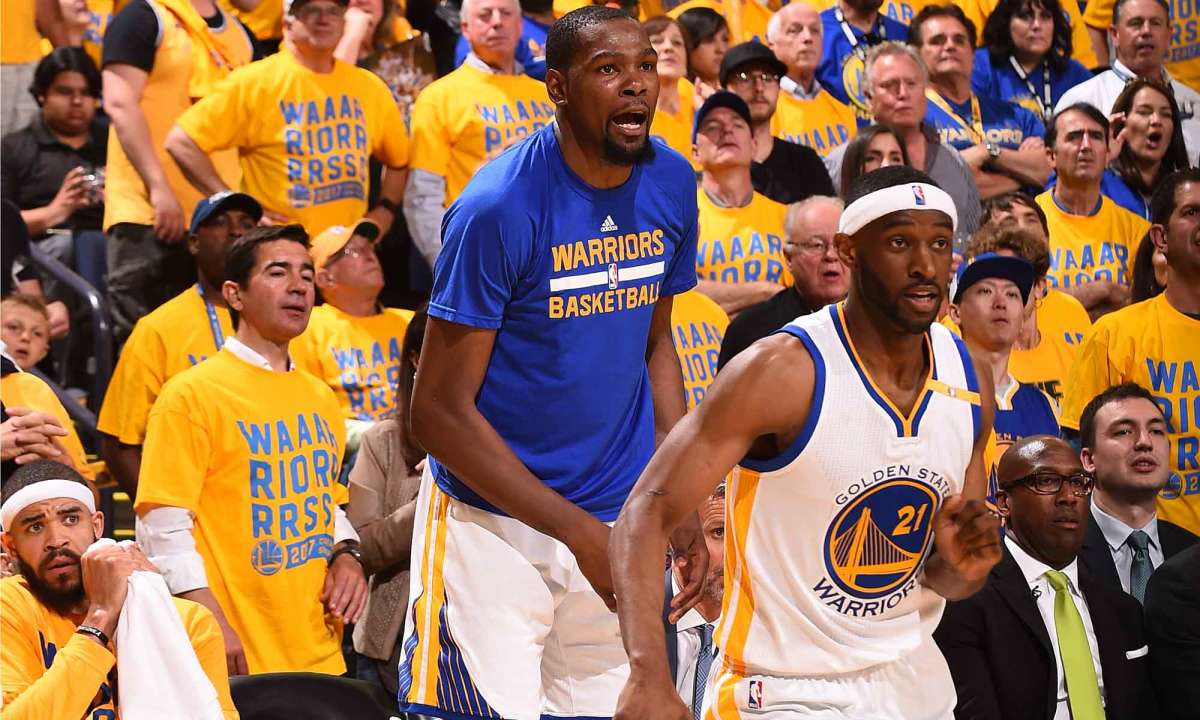
6. The Team is Out There Running the Show
When asked about Kerr’s approach, Warriors players invoke phrases like freedom, trust, and he lets us be ourselves. Not just the stars but bench guys. As reserve guard Ian Clark puts it: “He kind of lets us coach ourselves.” (Which is both true and not true, depending on how you view coaching.)
During film sessions, Kerr regularly asks for input. Usually it’s a defensive question—say, whether to trap the pick and roll—and usually Green speaks up first. Maybe someone else. Then Kerr calls on Iguodala because, “he has a brilliant basketball mind but he’s reluctant to speak.”
Kerr got the idea from an experience in San Antonio, late in his career.
“We’re going to go under the screen,” Popovich said during a team meeting.
“No, we gotta go over,” replied Avery Johnson, then the team’s point guard.
Pop was firm. “We gotta go under.”
And then, as Kerr remembers it, Johnson slammed his fist on the table and shouted. “YOU DON’T SEE WHAT WE SEE OUT THERE!”
Kerr was blown away. “It was a good reminder to me because this is Pop, one of the best in the world at his business, and his point guard is like, ‘You don’t see what we see.’” He continues. “On the sideline we can see something unfold but we can’t feel the speed with which it unfolds. Players might have a better call for a certain coverage based on the speed and their reaction abilities and the personnel we’re going against.”
By now the Warriors expect it. “It keeps me on my toes,” says Iguodala, who appreciates Kerr’s interest. “If he asks, I have to know what I’m talking about. I just can’t throw anything out there.”
Same goes for staffers. Some, like assistant coach Bruce Fraser, think Kerr occasionally considers too many opinions—“I have to remind him that, at the end of the day, he’s the smartest guy in the room”—but then again, you never know when doing so will win you a playoff series.
The Warriors' Deadly Combo Of Hustle And Flow
To this day, U’Rren remains surprised when Kerr unexpectedly calls to solicit his opinions on, say, the next day’s practice. “I’ll share my thoughts and at the end I’ll be thinking, ‘That’s really freaking cool that he asks me.’” But then U’Ren, a thoughtful sort, will break it down further. “I mean, I’m sure he does care what I think, but half of the value of doing this is the feeling I have afterward. I love this guy because he asked what I thought. So I always think to myself, ‘Does he really care or is he just making sure I feel valued?”
In the end, U’Ren has decided, maybe it’s irrelevant. Kerr could choose to ask him or choose not to.
7. Kerr Is Fluent In Grinder
It’s easy to forget, in hindsight, Kerr’s path to this point. He only received a scholarship to the University of Arizona because the team was 4–24 the year before he arrived. “To be honest, I brought him on the team assuming we’d recruit over him the following season,” says Lute Olson, the longtime coach, now retired. Adds Olson: “I don’t think I’ve ever met anyone that’s made more of an impression on me than Steve, knowing what he’s come from and what he ended up being.”
Neither was Kerr expected to succeed in the NBA, for how many slow-ish 6’3" shooting specialists do? But after being drafted in the second round by the Cavs, Kerr ended up latching on to a succession of NBA teams in need of marksmen. Though he hung around, he started a total of 30 games in his career.
His was a life on the margins. He might go a week without playing, then enter a game in a high-leverage situation, expected to hit a big shot. So, as he related a few years back, he eventually began writing “FI” on the toes of his hightops. F--- it. That way, every time he looked down he’d see a reminder. You can only control so much. Let it fly.
As such, Kerr relates to players like Clark, a backup on a one-year deal. If Kerr knows Clark won’t play on a given night, he’ll pull him aside. “Hey, we’re going with Patrick (McCaw) tonight because of matchups, but it’s not a forever thing” Kerr will say. “Don’t worry about it, you’ll get your shot. Stay ready.”
Kerr says such conversations are a conscious effort to “overcommunicate” with the players. Apparently, it works. Says Clark: “Being able to hear it from your coach, rather than it just happening and not knowing why, it’s different. Your head is in a better place when you know what’s going on.”
Other times, Kerr types and prints out letters to his players. In an age of texts, emails, and social media, it’s a way to not only break through but to time-shift a conversation. The player can re-read it, digest it, sleep on it. “It was good,” Iguodala says of the letter Kerr wrote him last year, when he was frustrated. “It’s a long season with ebbs and flows and Steve put things back in perspective.” Harrison Barnes returned to Oakland last summer for Team USA camp to find a thank-you letter from Kerr, wishing him good luck. “Steve was always the guy in my corner,” Barnes says, getting a little wistful. “There are a lot of things I don’t want to say I overlooked but that maybe I took for granted after four years there.”
Kerr downplays the letters, but U’Ren says, “He really works on them. They’re heartfelt." They are also a connection to Kerr’s past. Despite his demeanor, Kerr says he was, “incredibly shy” as a boy. “I needed basketball to bring it out of me, being interviewed by the media, getting more confident with myself, becoming a better player,” he says. “I wasn’t a very confident kid growing up. But I was a good writer and I read a lot so I had a lot of that communication inside me.”
But here we go, once again, making this all about Kerr, so let’s not forget…
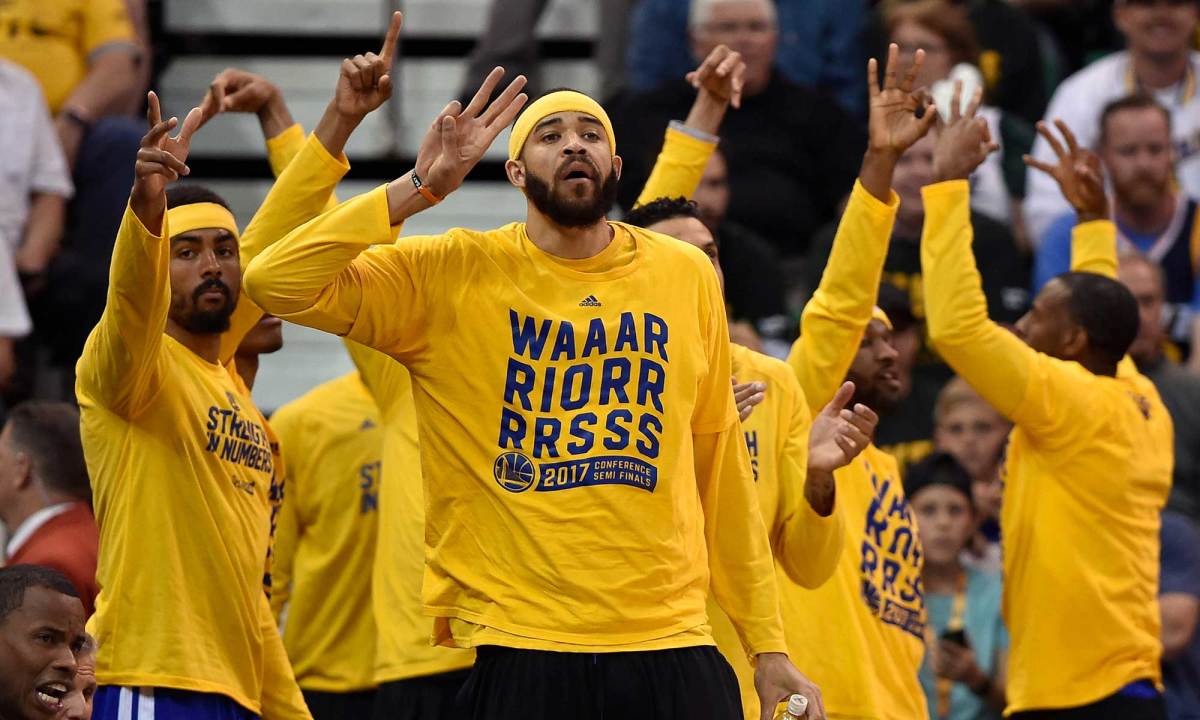
8. JaVale McGee!
I mean, just look at him, bounding and swatting and making people happy, his triplicate rat tails swinging like tiny, hairy metronomes. Who’s to thank for that reclamation project? Iguodala was the one who recommended signing him, after a stint together in Denver. Assistant coach Jarron Collins works with him. His teammates believe in him. And let’s not forget the men who actually signed JaVale …
9. Bob & Jerry & Joe
That’d be Myers, West, and Lacob, one NBA Executive of the Year, one living legend, and one owner who may have earned himself the office nickname “Buzz Lightyear” but whose track record is pretty darn impressive. Which suggests that perhaps all Kerr is doing is carrying out management’s larger plan, a conductor steering a train on pre-existing tracks, with a fixed destination.
Except then he wouldn’t need to yell…
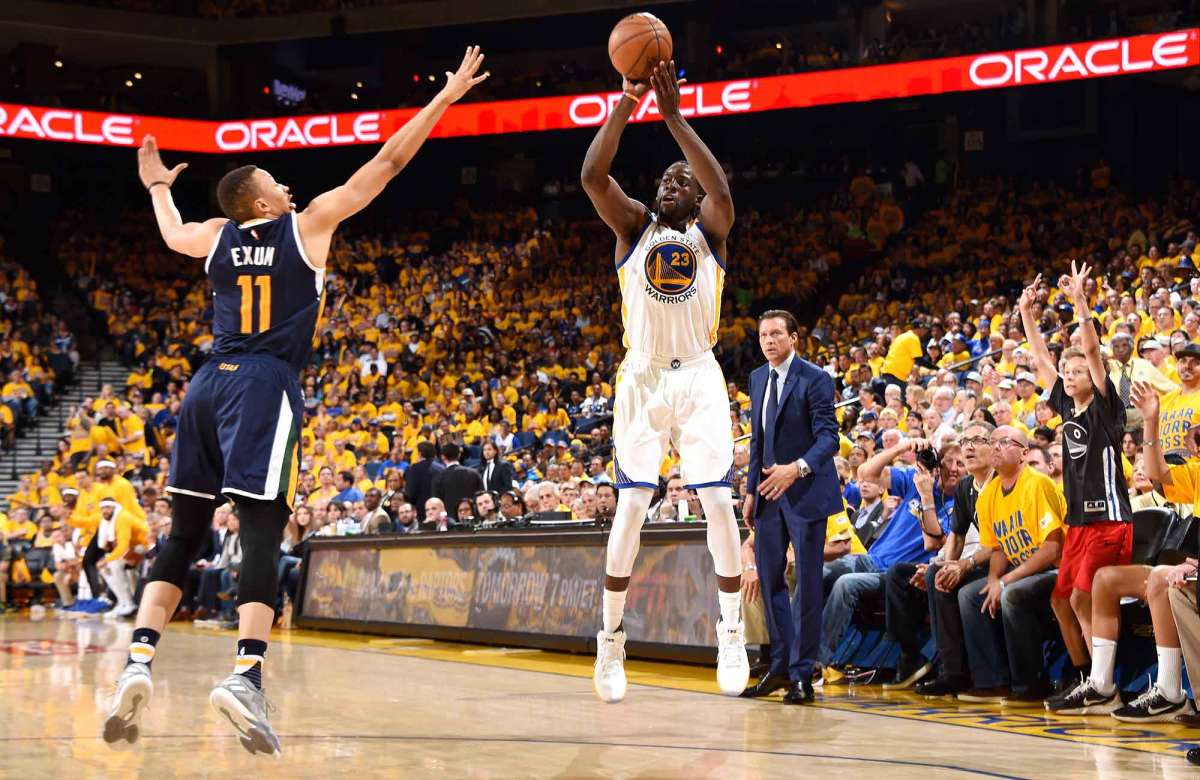
10. “Hell No!”
This, according to Draymond Green, is what Kerr shouts when he takes a three. Before games. In games. At the start of shootaround. Green lines it up, is about to release and then, from the sideline, he hears a gleeful voice… “Hell No!”
For Kerr, Green represents a unique coaching challenge, a player whose strengths are also his weaknesses, whose basketball IQ exceeds that of many coaches, and who may be the Warriors’ most important player while definitely being their most volatile. A man who’s spent his life succeeding by challenging authority. He and Kerr have battled at times, never more volubly than last season, when Green became so angry at halftime of a game in Oklahoma City that arena security showed up.
And yet Green says he now gets it, bringing up…
11. That Game Against The Pelicans
Last year, the Warriors were playing in New Orleans. As Green tells it, in the first half Steph pulled up for “some crazy shot.” Then Klay did the same thing. The lead slipped, from double digits all the way down to one, at which point Kerr called timeout. “And at that point,” says Green, “I’ve taken like one shot and have like, no turnovers. But [Steve] looks right at me and goes, ‘What the f--- is wrong with you? Get your f------ head in the game!”
Green was shocked. Kerr was yelling at him?!?
“But he’s smart because he knows exactly what I’m going to do,” Green says. “I’m gonna get mad and then I’m going to yell at everyone else and get them going.” He pauses. “Now is that a tactic? Is it on purpose? I don’t know. It doesn’t matter. It’s coaching is what it is. That’s coaching. Sometimes I sit there afterward and think, ‘Damn, that motherf----- got me.’”
Green continues. “But he knows me. You couldn’t do that to someone else. He has a feel for it. That’s his thing. He has this feel for exactly what each player needs.”
All-NBA Teams: Toughest Calls, Biggest Regrets
Which brings us back to Hell No. “He knows yelling that turns on something inside of me,” says Green. “If he just said, ‘Don’t shoot that shot, it’s not right for us,’ it wouldn’t work. (Kerr says his goal is to motivate Green because, as he explains in an email, “he thrives on people telling him he can't do things, so I yell that partly as a joke and partly because I think it will motivate him. He's at his best with a chip on his shoulder and I'm trying to keep it there.”)
So, where does that leave the two? “We’re as close as anybody on the team," Green says of his relationship with Kerr. “I mean, I can talk to Steve about anything,” he says. “We can go at each other and know it’s never personal.”
Case in Point: When Kerr showed up before practice last Friday and saw Green, the forward was excited—“I was like, holy s---, coach is here!”
Kerr? He grinned and said, “Oh, so now that I’m gone you start making all your threes.”
Which is as good a segue as any to…
12. Cocaine (Okay, Maybe Not Literally)
When Kerr was in college, a reporter asked Arizona players for their New Year’s resolutions. Kerr said he only had one: “To keep coach off the cocaine next year.”
Lute Olson laughs at the memory. “Only Steve could get away with that.”
Friends get it just as bad. While recording audio for old editions of NBA Live video games, Kerr delighted whenever he got to provide commentary for old teammates. Recalls Marv Albert, his partner both at TNT and for the recordings, “He’d be like, “Oh no, what ridiculous shot selection from Jud Buechler!” Now when Albert arrives for the standard pre-game coach’s interview, Kerr makes sure to hang a dartboard with Marv’s face on it, often pretending to be in the middle of a game when he arrives. And because Kerr finds it hilarious that Marv always opens broadcasts with an evocative weather-related comment—“It’s a cold, windswept night here in Oklahoma City!”—Kerr had a chart of adjectives made for Albert. Some are even printable.
No event is too formal, or mundane, for a Kerr crack. Asked after a Finals loss in 2015 how much pressure was on the Warriors, on a scale of 1 to 10, he responded: “Five point one three.”
There is, of course, a rationale. To cut through the self-seriousness of sports. Speak the time-tested male language of mockery (“Hell no!”), and most important, keep his team loose. Rarely does a Warriors film session go by without Kerr splicing in some clip, from the infamous Collins “Slow Break” to a snippet of Walton in “The Young and the Restless.” Last month, after Andre Iguodala decided video coordinator Luke Loucks bore a resemblance to a certain gravel-voiced coach, Kerr cut in a segment of photos titled “Luke or Thibs?” (Loucks may never escape the Iguodala-bestowed nickname “Lil’ Thibs”).
But—and here would be Kerr’s Second Boldface Rule—he saves his best material for himself. To go back through his press clippings, from college to the NBA to coaching, is to see a master of self-deprecation at work. Here he is, as a young guard with the Cavs, boasting of guarding Jordan that, “I can hold Michael to 65 on any given night.”
“The most important part of broadcasting,” says Albert, in explaining why Kerr transitioned so well, “is showing the audience you don’t take yourself too seriously.” (This is part of what makes Jeff Van Gundy so good at the job, and why Shaq struggled for so long).
Not all of Steve’s jokes land. Nick Kerr tells of how his dad made a bunch of cracks during a team meeting the week before he took his leave and none of the players laughed, which in turn caused the coaches to cackle. “He just sat there and took it,” says Nick. “That’s how he is.”
Is there some larger utility to all this? It’s revealing to create word clouds from Kerr’s comments, whether they be at a press conference or in an interview. Take his commencement speech at the University of Arizona, in 2004. The terms that figure most prominently include team, family, coach, cultural differences, opportunity, kids, and understanding. You’ll find similar themes in his other speeches. For contrast, try puling up a word cloud of, say, the current leader of the United States.
Which leads us to the fact that…
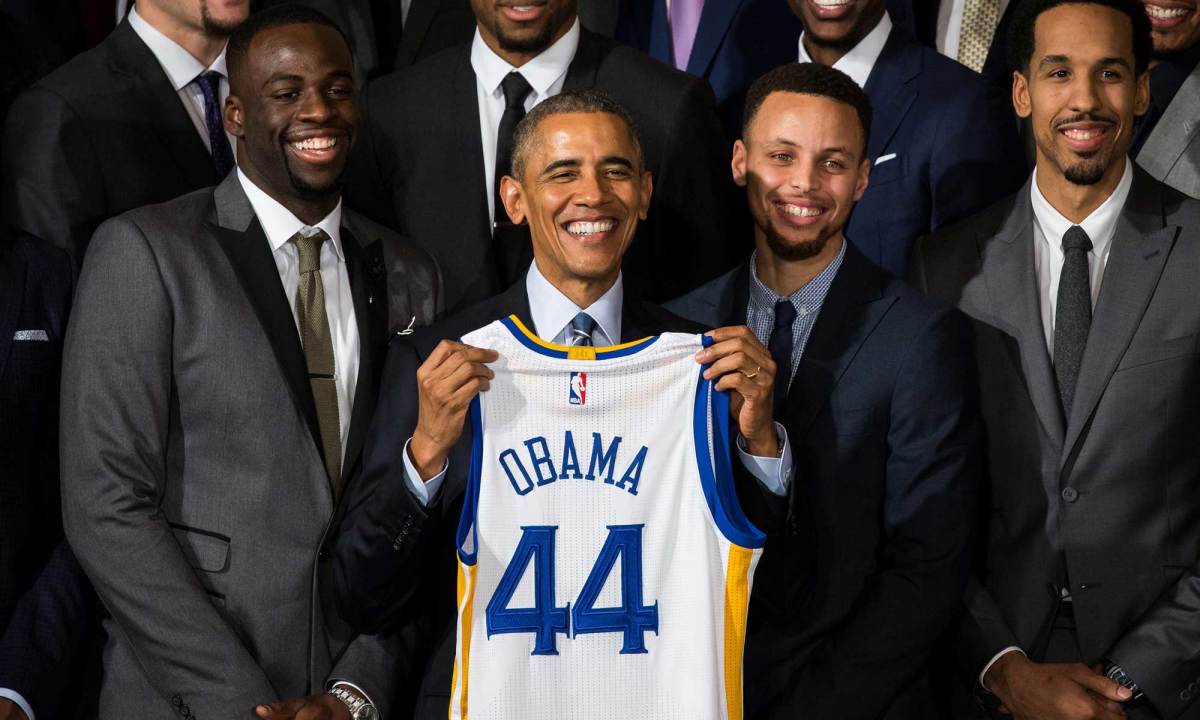
13. Kerr Keeps Insisting That The World Is Bigger Than Basketball
This past March, when Kerr appeared on KQED, a San Francisco public radio station, the host, Michael Krasny, asked Kerr whether he planned on running for office.
Kerr’s response—“It doesn’t sound like a lot of fun.”—was not surprising, because, well, it doesn’t. But neither, strangely enough, was the question. In an era of political disenchantment, when people are looking for someone to follow and the concept of “sticking to sports” is becoming increasingly antiquated, Kerr stands out. He has spoken out on gun control, immigration, and race relations. You can now buy“Popovich/Kerr 2020” t-shirts if you’d like (the proceeds go to charities, including the ACLU).
Kerr understands speaking out could put the team in a bind, as his views don’t necessarily reflect the organization. But, as he says, “On the other hand, we should all speak our minds. It’s an important time to do so. There’s a lot of bulls--- in the world. You got to call it out.”
Of course this is easier to do when your team wins relentlessly, which brings us to the question of…
14. What If Kerr Were In New York Right Now?
Harrison Barnes thinks we might be surprised. “Guys respect winning and he’s played with the best, coached the best, won rings,” says Barnes. “The biggest part of coaching is cultivating the winning mentality. In practice, the locker room, all the stuff that happens before you see us at 7:30.”
Kerr appreciates the support but he’s not buying it. Nothing works without talent, and Kerr is emphatic that his success in Golden State is due to dozens of other factors, in particular mentioning “Steph Curry’s joy” and Iguodala’s sacrifice.
And yet it’s worth noting that…
15. Kerr Didn’t Take The Knicks Job (And That Alone Tells Us Something)
Just as he didn’t try to revamp the Warriors, or rein in Steph, or make power plays, or create divides in the locker room, or any of the multitude of other practices other coaches, including his predecessor, Mark Jackson, occasionally engage in.
To the contrary, Kerr can sometimes seem like…
16. He’s A Fan Of Everybody
Occasionally, says Adams, the assistants may get down on a player and focus on his limitations. It’s human nature. But Kerr rarely does. At first, Adams was skeptical, but he’s come around. “He believes there’s something special about each one of these guys as humans and players. And he works very diligently about fostering that in each individual. And this isn’t some pie in the sky thing. Sometimes we’ll say, ‘I don’t know if he can do this’, and Steve is always the rah-rah guy. He sees something sometimes that we don’t see. He recognizes the small contributions.”
Barnes describes Kerr as forever “in your corner”. “It’s a way in which he leads by not reminding everyone of his position,” says Barnes. “He can be the head coach but he can also take you aside and be a fan of your game.”
This is most evident with someone like Curry, for Kerr often seems just as amazed as the rest of us by his exploits. But it’s also in those other moments, the small ones, such as the well-publicized (but telling) moment this season when cameras caught Kerr on the bench showing Curry, in a relative slump at the time, how merely taking shots helps the team. “Carry on, my son,” Kerr said.
It’s not just players. Last June, Kerr met with Mike Brown at the team hotel in Cleveland on an off day during the Finals. They covered a lot of topics, but one thing stuck out for Brown. Recalls Brown: “He said, Mike, everyone labels you a quote unquote defensive coach, and that’s BS. I just need you to come coach and be you.”
Which is reminiscent of…
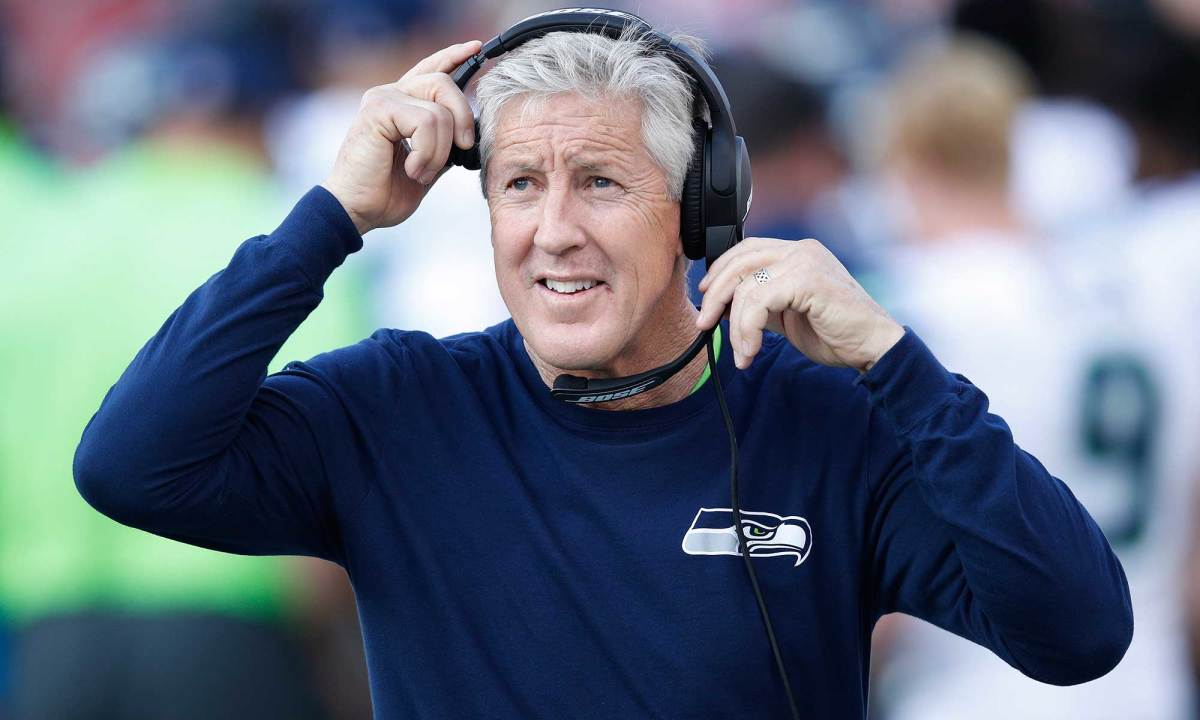
17. What Pete Carroll Said to Kerr
In the summer of 2014, Kerr spent a few days in Seattle with Carroll and the Seahawks. Recalls Kerr: “He basically told me, I’ve spent 10 years coaching to figure all this out. I got fired twice and learned a ton under Bill Walsh and then tried to formulate my coaching philosophy only to realize I didn’t really have one.” The key, Carroll finally realized: Your approach has to reflect your identity.
“Give me one of your core values," Carroll said to Kerr.
Kerr thought for a moment. “Joy.”
"OK, joy,” said Carroll. “That has to be reflected in your practices every day.”
And on they went.
Kerr calls the meeting “critical.” At the time, he was two months from starting with the Warriors. He had a ton of ideas—he knew he wanted to play fast and loose—but that was it. And he knew he couldn’t imitate his mentors. Popovich was in the military, so “Pound the Rock” worked for him. But that wasn’t Kerr. If he tried to be “Little Pop”, or a watered-down version of Phil Jackson, he’d fail. “Players see right through it,” Kerr says at lunch. “What I learned from all the coaches I talked to was that your entire process has to reflect your own values.”
Which, I note at lunch, goes back to where those values derive from, which would be…
“My parents,” Kerr says immediately. Then he pauses. “Now it’s my turn to get misty,” Kerr says, for we’d discussed Pop’s tendency to do this at times. “Now I’m going Gregg Popovich on you … thinking about my dad.”
18. Malcolm Kerr
In 1984, while president of American University in Beirut, Malcolm was shot and killed on his way to work. Steve was a freshman at the University of Arizona at the time. This past December, John Branch of the New York Times wrote about the event, and Kerr’s childhood in Beirut. Some of the Warriors read the story and were surprised. Kerr had never brought up the experience to the team, just as he never spoke about or used his health as a motivational tactic. Four days after our lunch, as his headaches worsened, Kerr was still insisting on running practice. He led drills and addressed the media. Afterward, I asked a few players how they thought Kerr was doing. Fine, they said, as far as they knew. “This year he hasn’t really told us anything,” said Clark. “We all just assume he’s doing well.”
The next day Kerr announced his leave of absence.
“He has this powerful message of what he’s gone though and the stories of the past are so horrible. I mean, that guy is tough,” says Fraser. “But he doesn’t want the credit, because he doesn’t want the players to see him like that.”
'You Can't Give In': Monty Williams On Life After Tragedy
By the way, the four core values Kerr came up with in 2014, the ones he still writes on the whiteboard occasionally? Joy, Competition, Compassion, and Mindfulness.
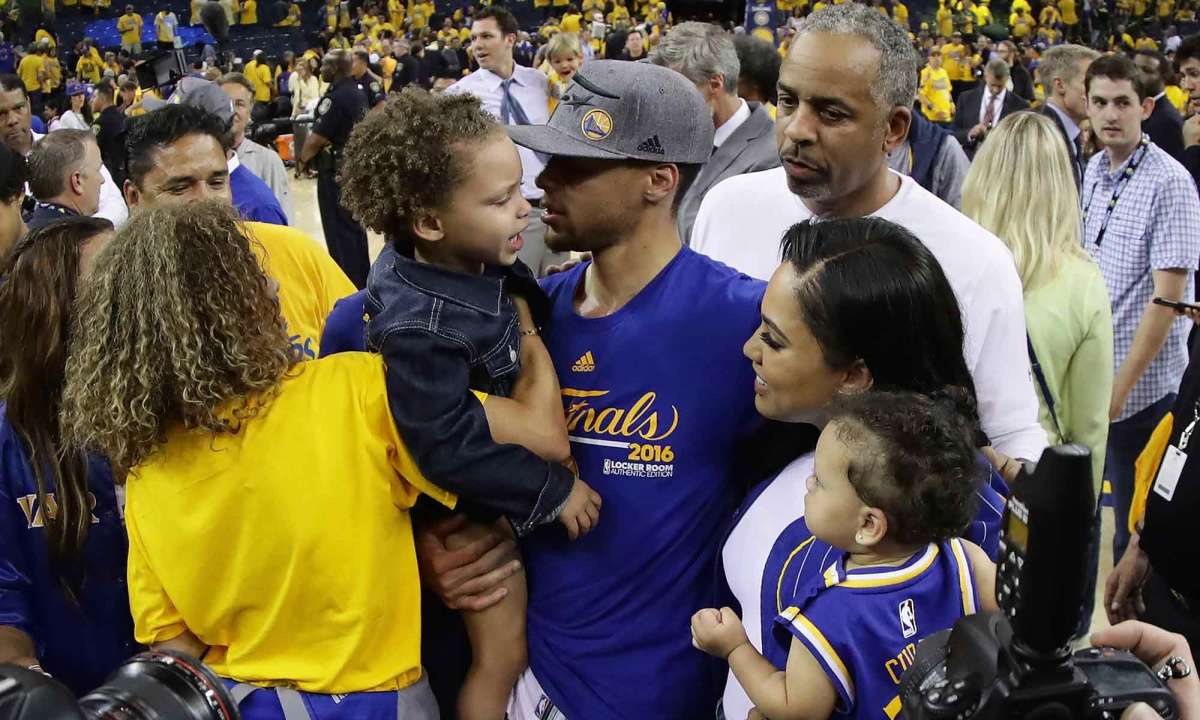
19. Kids On The Plane
Popovich allowed it, and now so does Kerr, recalling how special it was to take Nick, then 7, on a road trip as a ballboy and Maddie, then 5, for a hotel sleepover (“I mean, what a special time to spend with your daughter”). “Pop understood the power of family,” says Kerr. “He recognized that’s way more important than the sanctity of the team plane.”
Often family is a euphemism for “team”. With the Warriors it’s actual family. Steph and Ayesha and Riley and Dell. Klay and Mychal. Draymond and his mom. Matt Barnes's twin sons, who shoot around with the players. ZaZaPachulia brought his kids on a Sacramento road trip toward the end of the season.
Does all this make the team closer? Who knows, but it does help prepare them for …
20. Appropriate Fear
Remember that thing Nick Kerr said earlier about his dad occasionally snapping? Steve says it’s on purpose (at least with the players; the refs elicit a primal rage from Kerr that mystifies even his friends).
It’s a concept Kerr got from Lute Olson and Pop—“who I was always a bit afraid of.” The idea: to create a balance between a really good relationship with the players—where they know that you genuinely care about their lives and how their careers are going and their kids—and every once in a while snapping to “remind them how much you’re asking of them and that you’re in charge.” Kerr believes players will accept the outburst if they know you care about them. “To be honest, it’s sort of how I parented too,” he says. “I think my kids would all tell you that I’m incredibly laid back but they all had a tiny bit of fear, because they knew I could snap.” (Nick agrees, though he struggles to recall more than one such snapping.)
Then again, maybe the truth of all this is just that …
21. The Warriors Are Contagious
Last summer, when Mike Brown arrived for the first day of summer league with his new team, he noticed a young man with a computer across the gym, setting up what appeared to be speakers on a table—“like he was a DJ, and he was gonna scratch or something.” Brown is an old school coach. Take the job seriously. Put in the hours. He figured this was just some new advanced tracking gizmo. And then: music. Music during stretching. Music during practice (!). Finally, Jarron Collins spoke to the team. Mercifully, the music stopped. “But then he finishes and it comes right back on!” says Brown.
Then, on the first team flight that fall, as Brown pulled out his laptop—“that’s when I always lock in, on the flight”—he heard more music. Not from the players' section. The coaches. He looked around, not wanting to make eye contact. “I was like, wow, the coaches got music going on!” But he wanted to fit in—“there are different ways to skin a cat, right?”—so he put his head down and then, surreptitiously, stuck in earphones.
In the months that followed, Brown occasionally looked to Adams, another old school coach, for commiseration. When Kerr hired Adams, in 2014, the then-66-year-old took one look at Kerr’s “fast and loose and fun” approach—the music, the jokes—and told Kerr, “This is a f------ circus. It’ll never work.”
Midway through that season, however, Adams re-assessed. “This is an interesting stew you’ve cooked up,” he told Kerr, “but it works.” Now, to talk to Adams about his Warriors experience is not dissimilar from talking to a parent who’s retired and found some new passion. Adams says Kerr is always telling him how much he’s learned from him; Adams tells Kerr it’s the other way around. “I came from a coaching era that was very different from now,” says Adams. “The coach had authority and you told people what to do and it wasn't a horizontal, relational pattern. I’ve learned an awful lot from Steve in terms of the possibilities for doing something in a different matter.” He elaborates. “The older you get the more you realize you can be great technically—I’ve always prided myself on trying to be a good teacher—but people have to be ...“ he pauses. “Maybe happy isn’t the right word, but they have to be cultivated mentally, emotionally, because things have got to be enjoyable, especially in sports, because you’re criticized all the time.”
Which leads us to the fact that …
22. Kerr Has Crazy-Good Emotional Intelligence
Last year, social psychologist Dacher Keltner attended a pair of Warriors practices at the invitation of the team. Keltner, who runs a lab at UC Berkeley, studies nonverbal cues, how people gain and keep power, and the dynamics of compassion. When Pixar wanted to understand emotion for the movie Inside Out, the company called Keltner.
As he watched the Warriors run through drills, Keltner was struck by Kerr’s approach. Rather than barking orders, or standing and watching, arms crossed—typical postures of authority—Kerr moved around the court, checking on players. Sometimes he focused on a star but more often it was a reserve, sharing a joke, a subtle touch on the shoulder, or a quick tip. When Kerr listened, he turned his whole body, leaning in. Later, when the two men had lunch, Kerr spent the bulk of it asking Keltner questions. When the conversation eventually turned to basketball, Kerr spoke about how grateful he was to be able to coach for a living. Keltner was struck by this, as he assumed Kerr’s job to be stressful, and knew the coach suffered from chronic pain. And yet, says Keltner, “He really did see it as a privilege to be a coach.”
Gregg Popovich Not Willing To Give Zaza Pachulia A Pass
Keltner had seen this combination of personality traits in powerful people before—intellectual curiosity, empathy, humility—but he didn’t expect to find it in an NBA coach. Rather than enforcing a traditional hierarchy, Kerr had in Keltner’s eyes created, “this really interesting collective.” Says Keltner: “The whole empathetic approach was pretty stunning, when you think about running a billion dollar team.”
This was not an accident. Back in 2014, after taking the Warriors job, Kerr spent a month thinking up a slogan for his new team, then enlisted Albert to narrate an introductory video for the players. The motto was such a hit that the marketing department decided to use it (“If I were smart like Pat Riley, I would have trademarked it,” Kerr jokes). Anyone who’s seen a Warriors game probably recognizes it: Strength in Numbers.
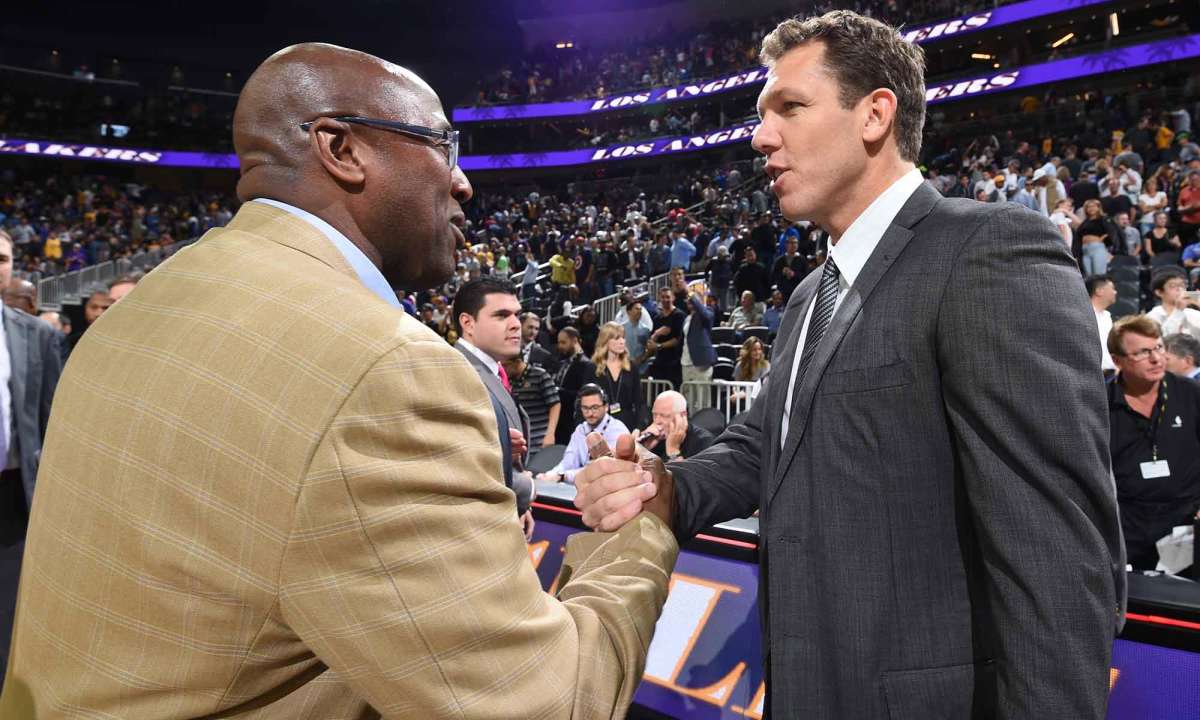
23. One Finger Up
Last season, when Kerr stepped away for the first time, Walton tried not to change anything, going so far as to continue rebounding for Green, because that’s what he’d done as an assistant.
Brown is operating similarly. Kerr has been speaking to Brown once or twice a day, understanding how complicated this can be. “He has a very tricky job on his hands and he has handled it unbelievably well,” Kerr writes in an email after the Game 1 win over the Spurs. “He has to try to continue to grow our culture while at the same time make the coaching decisions that are in his gut, regardless of what I think. And yet I'm behind the scenes still talking with players and providing messaging and advice to Mike and his staff. That's a tough dynamic to reconcile but he's doing a great job of it. We're lucky to have him.”
To Green, this all comes back to Kerr. “When Steve arrived, he built a culture of empowerment,” says Green. “It’s like the old saying, If I punch somebody with a fist, I’m gonna knock em out. But if I punch somebody with a fist with one finger up, I’m going to break my f------ finger. And that’s what he did. You’re more powerful like this"—and here Green makes a fist. He continues. “So he built a culture to where, one man down, the next man has to step up. And it’s not just on him, it’s on everybody to come together and empower that next man and have his back through whatever the situation is, and ride for him just like you’d ride for Steve. Or ride for Kevin just like you’d ride for Steph. Or ride for Patrick McCaw the same way you gonna ride for Klay. Because the system he taught us is all about continuing to move on, you just continue to flow.”
24. The Study
Three decades ago, a pair of academics named Jim Kouzes and Barry Posner began studying leadership. After hundreds of interviews and surveys, they came to the conclusion that exemplary leaders share five practices. I brought the list to Kerr and read them off. They are:
1. Model the Way (that is, setting an example for how you want others to act)
2. Inspire a Shared Vision (get buy-in for a common goal and believe in it passionately)
3. Challenge the Process (see risks as opportunities)
4. Enable Others to Act (empowering those around you)
5. Encourage the Heart (focus on the humanity of people, and make them “feel like heroes”)
As I read, Kerr nodded along. “Yeah,” he said. “Right, right. Interesting.”
Then, when I finished, he said, “I’d never thought of that before but when you read that it all made sense.” He paused. “That’s basically who we are.”
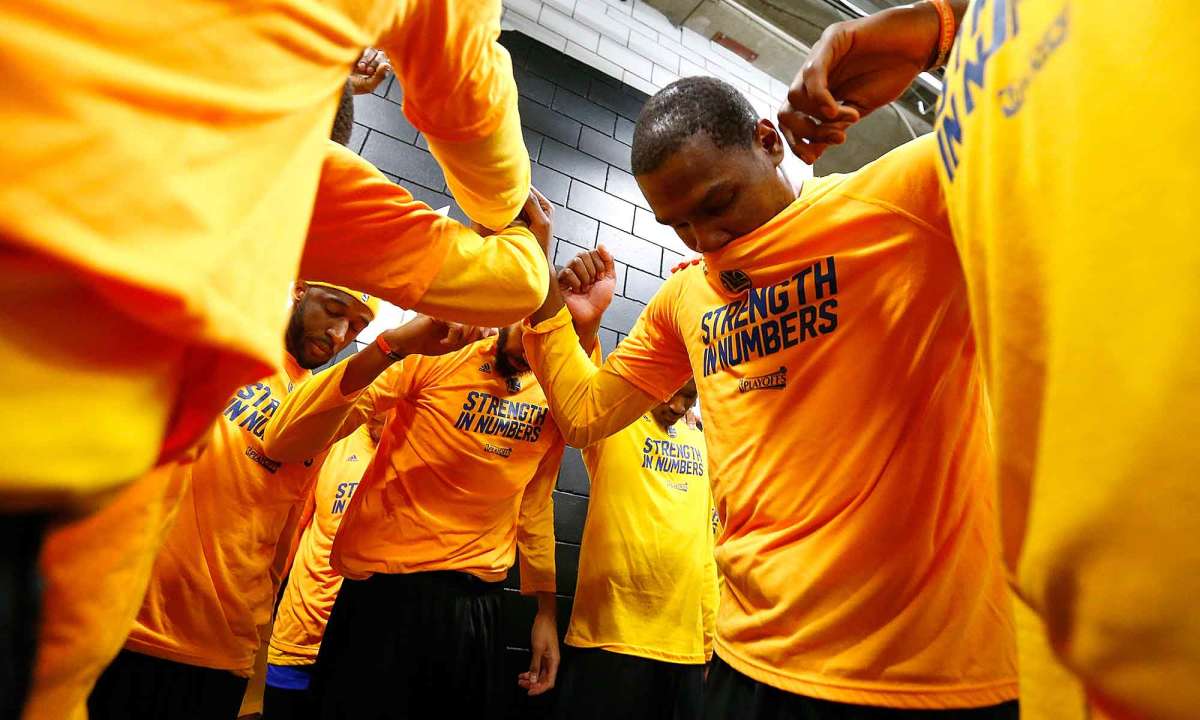
25. Who They Are
This Monday, Kerr showed up at practice to be with the team, though team officials cautioned not to read too much into it when it comes to his recovery. At heart, Kerr is a competitor. A guy who retired from the NBA and immediately took up serious tennis, playing two-hour hard court matches (which in turn torched his knees). He fights the elliptical machine at the practice facility most days but it’s not the same.
And yet, unlike some competitors, Kerr doesn’t chase credit. “Some people crave that feeling of things falling apart when they’re not there,” says Bob Myers. “Steve’s the opposite.” Instead, Myers uses the analogy of a parent whose kids go off to college. If well prepared, the kids will flourish without parental guidance. “Because your teachings are still there.”
You know the references to leadership rules and secrets mentioned earlier? Kerr would find the concepts hilarious, invoking one of his favorite words: bullsh--. It’s a term he uses often, and which has filtered down to the staff. The message is only good if you believe the messenger, right? And Kerr believes human are adept at sniffing out bulls---. So, no, he has no leadership secrets, because secrets are things no one else knows.
You want to lead like Kerr? It’s easy. Just be humble and grateful, curious and self-aware. Communicate, value family, and empower others. When bad things happen, keep a broader perspective. Most of all, create something bigger than yourself for, as Keltner points out, the real test of a leader is what happens once they leave.
Which is to say that, as you’ve probably deduced by now, the reasons Kerr is so important to the Warriors are not all that complicated. They are the same reasons the team is doing fine without him.
